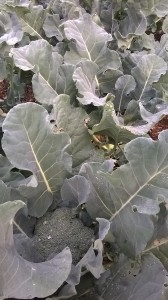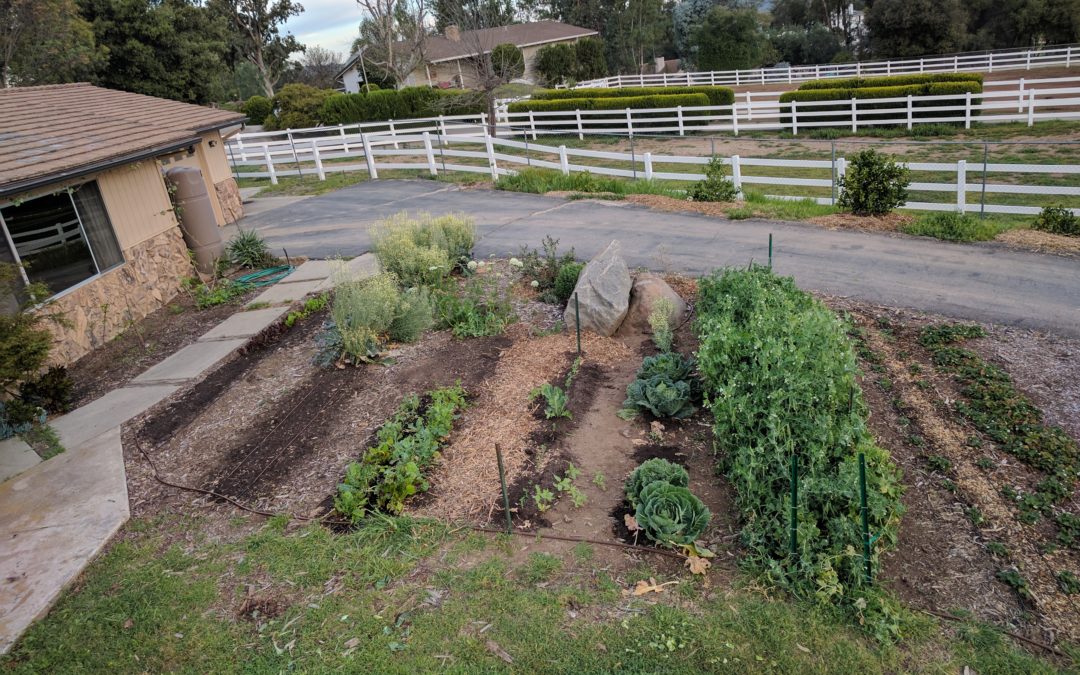Not spring. Maybe elsewhere, but in Southern California now is the time.
I had almost forgot this lesson, and I hadn’t planted one of the rows of the vegetable garden, until about a week ago when I recalled all of the advantages of growing in the fall.
For one, the temperature outside is so pleasant right now. The average daily high for November in my neck of the woods is 73. Unlike in July, I actually want to be out in the yard tending to things every afternoon.
Related to that, the weather is so forgiving for getting plants started. If you miss a day of watering some new seedlings, they’re unlikely to wither. This fall, I completely forgot to turn on the drip line to some broccoli and cabbage seedlings, and they went a couple weeks before looking droopy.
Of course, very soon watering will take care of itself as the rains fill in. This is my favorite aspect of growing in the fall. It’s the most economic time to grow in Southern California since not only do you not have to pay for water but you also don’t have to spend time watering. The sky opens up and does the work for you.
Because of this, we can also say that fall is the natural season to grow vegetables here. It’s when many native annual plants do their growing, such as California poppies. So many annual weeds germinate and flourish in the fall also, like wild oats and filaree — and wild mustard, which is a cousin of the broccoli and cabbage and cauliflower that we intentionally grow.

All this goes to say that it’s a big mistake if we let our summer vegetable gardens die out and wait all the way until spring to plant again. That’s acting like you don’t know where you live, as if you live somewhere with a snowy winter.
Which vegetables can we plant in the fall in Southern California? See my old Master Gardener advisor Vince Lazaneo’s Vegetable Planting Guide here. Or see my post for September or October. Or see my post, “Which vegetables can you plant now in Southern California?”
P.S. Do be aware that in late fall and early winter the sun is low in the southern sky and trees and walls and buildings throw long shadows to their north. What this means for a fall-winter vegetable garden is that it won’t grow well if it’s planted just north of a large tree, wall or building because it won’t get enough sun.
All of my Yard Posts are listed HERE




Definitely not the case in Reno! 6″ of snow on the ground. I bet spring is the best time here.
For sure, spring is best in Reno. That’s the important thing to remember: every location requires different timing.
My current yard even requires different timing compared to my old yard, which is only about 20 miles away. (The difference between Southern California and Reno is exponentially greater.) For example, in the old yard I would plant potatoes from September on through winter, and they grew successfully. But now I have to get them in by mid-September at the latest because our nights are a few degrees colder here and we usually get a frosty morning in December that nips the potatoes’ growth. Of course, I found this out the hard way our first December.
And that’s why you can’t just read any gardening blog or fruit tree growing book and follow the advice uncritically, unfortunately — this blog included. I wrote the webpage above titled “Location” addressing this point.
We in the western U.S. have to especially keep this in mind because so much of the information on vegetable growing and fruit tree growing that pervades our culture comes from and is relevant only to the middle and eastern U.S.
Take the example of the common advice that it’s best to water in the morning. Why? The idea is that foliage will dry in the day’s sun whereas if you water in the evening the foliage would remain wet through the night, encouraging fungal growth.
This may be fine advice for someone in North Carolina, where the humidity is high and fungal diseases thrive. It’s irrelevant in most of the West. If our humidity is half that of the east on a summer day we complain, and so we don’t have to worry about the fungal issues they do.
In fact, I mostly water in the evening because it’s more efficient. The sun evaporates less from the leaves and the surface of the soil.
For planting a fall garden, are there vegetables that do “better” along coastal areas with early morning fog, cooler-than-normal-temperatures along southern california coast?